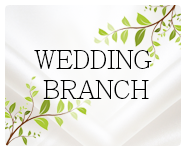As summer rolls in, many of the weddings for June, July and August are already arranged. With this in mind, we tend to turn our minds to Autumn around this time of year and have noticed a few trends when it comes to wedding entertainment requests!
The first thing to note is that many brides and grooms appear to be requesting a lot more strolling entertainment than in previous years. In truth, this has been rising year on year for at least the past four years, with numerous bookings for acoustic music acts that can roam from place to place – both inside and out – as well as a few more ‘interesting’ acts that many might not immediately think about when planning a wedding.
When it comes to booking roaming music acts, there are a number of possible options. It’s a wonderfully interactive slice of entertainment for any occasion and the sheer joy that the music generates makes it tremendously popular at weddings throughout the year…
Ultimately any wedding entertainment decisions are the choice of the couple and any stats that we assess are purely for interest value only. Let’s be honest, we’d all like a wedding that plays to our own individual tastes so don’t focus too heavily on the trends we’ve laid out above. Although we love strolling entertainment, there are many more possibilities available when it comes to celebrating your wedding day so let your imagination run wild and dare to be different…














